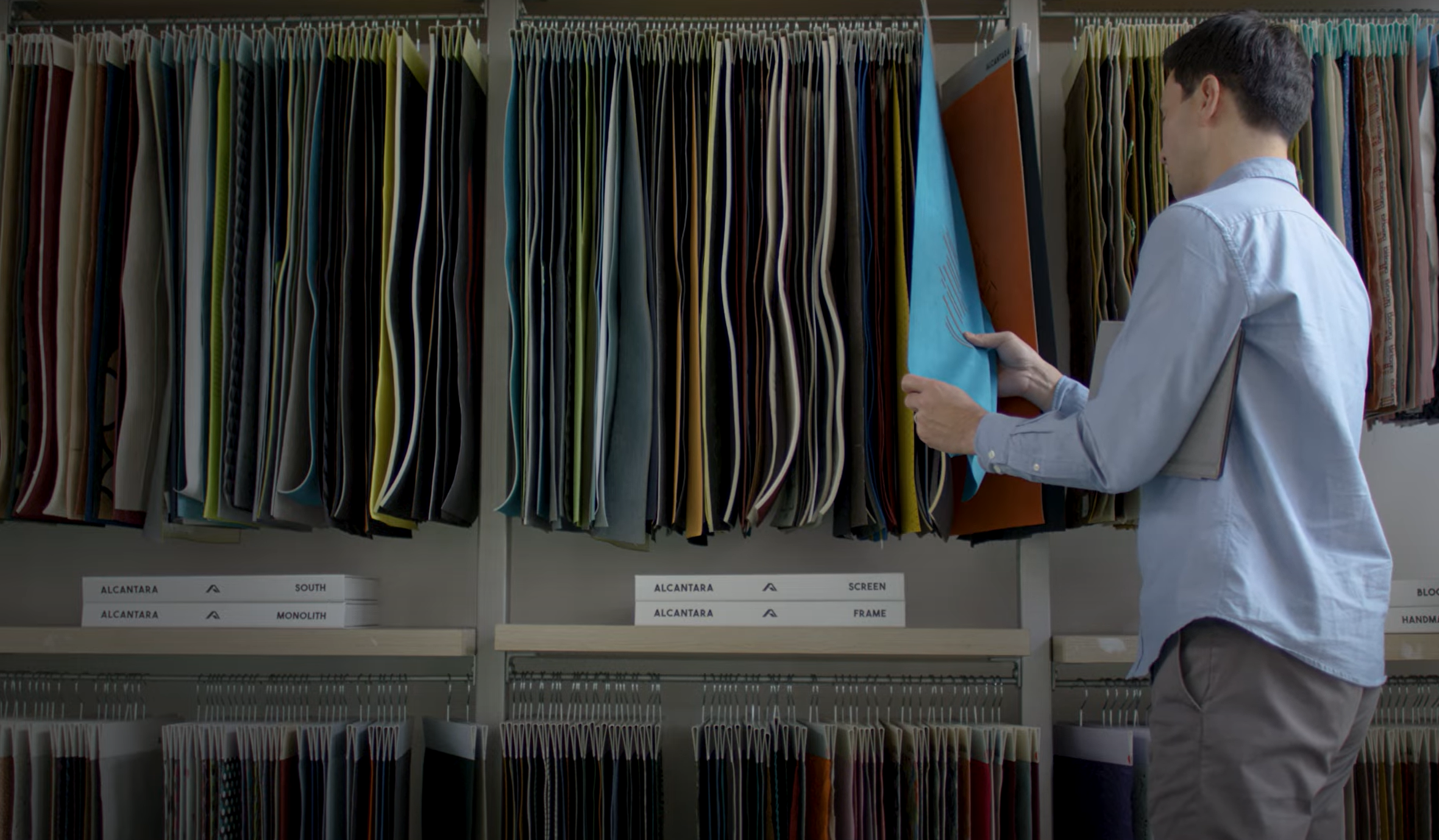– The estimated reading time is 8 min.
Behind-the-design: Surface pro signature keyboard
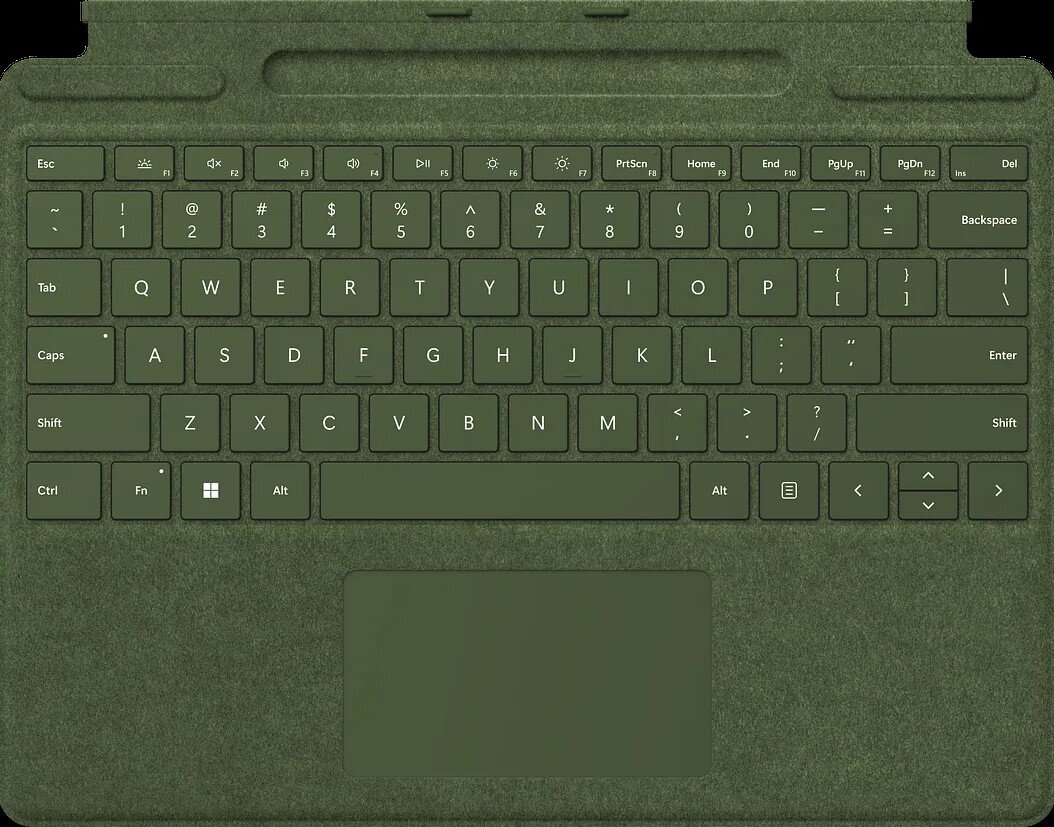
When Microsoft launched a moonshot goal for Sustainability in 2030, the Surface design team began working cross-functionally to envision what supporting steps they could take in the short, medium, and long term. Closest on the horizon was the chance to investigate renewable materials that could be incorporated into device hardware to minimize waste and reduce reliance on non-renewable materials.
In October of 2022, the new Microsoft Surface Pro Signature Keyboard was launched in Forest and Sapphire colorways that use a partially biobased version of a beloved material called Alcantara. It’s an incremental but exciting step in reimagining the next generation of Pro Keyboard materials that reduce our dependency on natural resources.
“Good design responds to a need,” said Senior Product Manager Erica Arnold when describing how climate change catalyzed their efforts. While the design team has historically been focused on balancing customer experience, quality, and cost, we are slowly pivoting to incorporating circular design principles into product development. Essentially, this approach toward product development has the potential to rewrite how our technology is designed, manufactured, used, repaired, and recycled at end of life.
As the team continues their journey toward embracing more environmentally conscious design principles, they’re keen to share their learnings and process in bringing the partially biobased Alcantara to life in the new Microsoft Surface Pro Signature Keyboard.
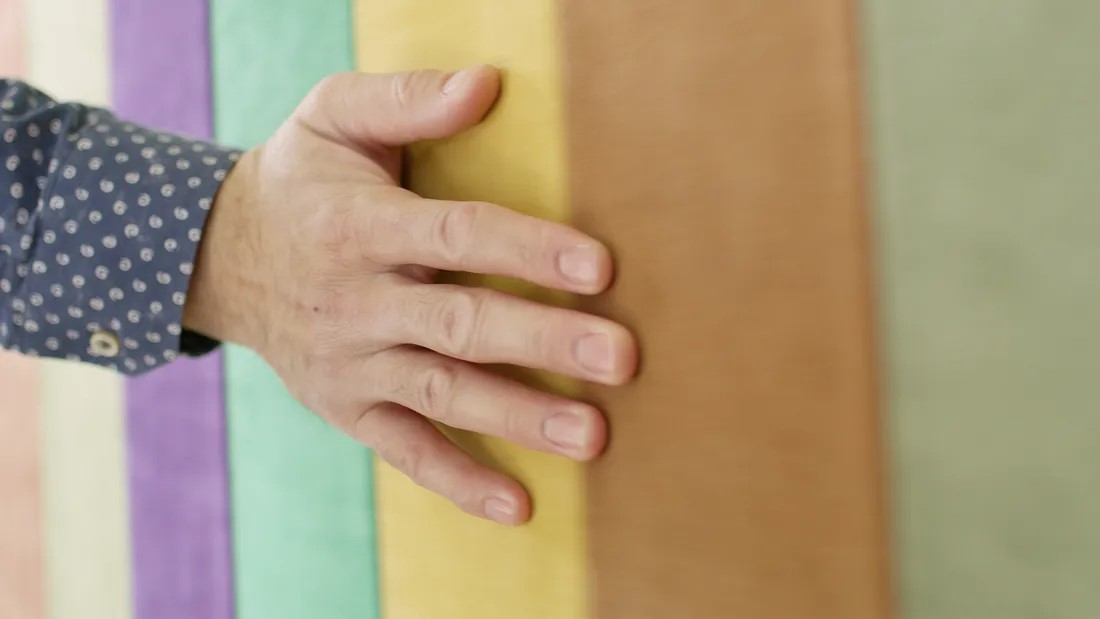
Alcantara: love at first touch
It began at a Lamborghini dealership. When exploring potential materials for Pro Keyboards, Chief Product Officer Panos Panay advised Corporate Vice President of Design Ralf Groene and Principle Material Designer Alec Ishihara to check out Lamborghini’s black matte finish and Alcantara black interior. When the two looked inside, they were drawn toward the car’s Alcantara steering wheel, upholstered seats, and headliner. As Alec recalls, “the material brought a level of emotion, luxury, and class into Lamborghini. It was breathtaking!”
If you’ve never seen or felt Alcantara, it has a premium look like high-quality Italian suede with a unique hand feel. It’s an elegant aesthetic that Microsoft has exclusive rights to. Composed of two-tone colored microfibers, Alcantara has depth and dimension, flickering from light to dark like overlayed shadows at dusk. The soft and silky material also exudes a comforting hand feel, adding a human element to your PC experience.
From an industrial design perspective, the flexibility of Alcantara was a critical factor in its selection. Because of the living hinge along the Pro Keyboard’s spine, the material would need to withstand a lot of bending. Their philosophy toward designing the Pro Keyboard was for it to be flexible. The quality and function had to extend the keyboard’s life. It had to be easy to clean and scratch resistant. Not only is Alcantara extremely durable, but it also maintains its softness when handled.
Ultimately, it was the harmonious pairing of the Microsoft Surface Pro Signature Keyboard, which was made with Alcantara, with the Surface Pro 4 that created the Surface tablet’s iconic aesthetic. The blending of Alcantara and metal, now a trademark characteristic, is unique in that it combines contrasting materials associated with different aspects of our lives. With textiles, we wrap ourselves in them. We wear, sleep on, and surround ourselves with them. Alcantara material, which simulates high-end Italian suede, is comforting, cozy, and soft. It encourages people to be confident, creative, and feel supported when using one of our select keyboards.
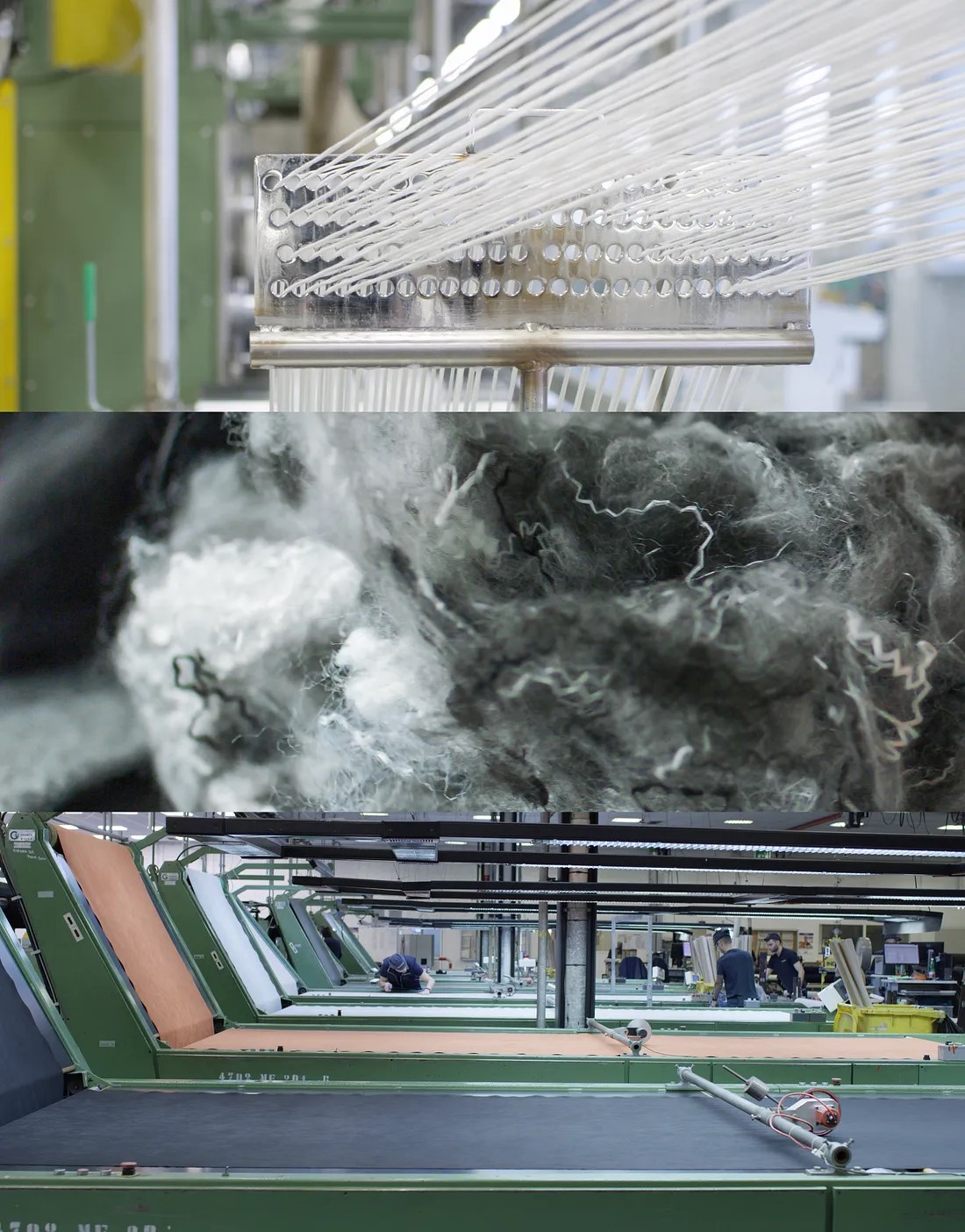
Introducing a partially biobased Alcantara
Microsoft Surface Pro Signature Keyboard remains a hero experience, praised by customers for its unique touch and productive keyboard experience. For Surface design, however, there’s a constant desire to innovate and forge new ground. On the horizon, an emerging question needed answering in light of our company’s Sustainability moonshot: how do we optimize Alcantara while incorporating more renewable materials?
Even the smallest change to a material can be a daunting prospect because it needs to still look, feel, and perform the same. Durability, reliability, chemical resistance, that signature hand feel — any change to the Alcantara material had to maintain these factors.
Senior Sourcing Engineer Barb Nicholson has long coordinated Surface’s engagement with Alcantara, a key part of which is identifying early opportunities to integrate renewable materials. Working with Alcantara has created a chance to design new material and to partner with one of the world’s first companies to be carbon neutral through carbon offsets. “We started this journey with Alcantara seven years ago. We both have the same drive to hit circularity,” said Barb.
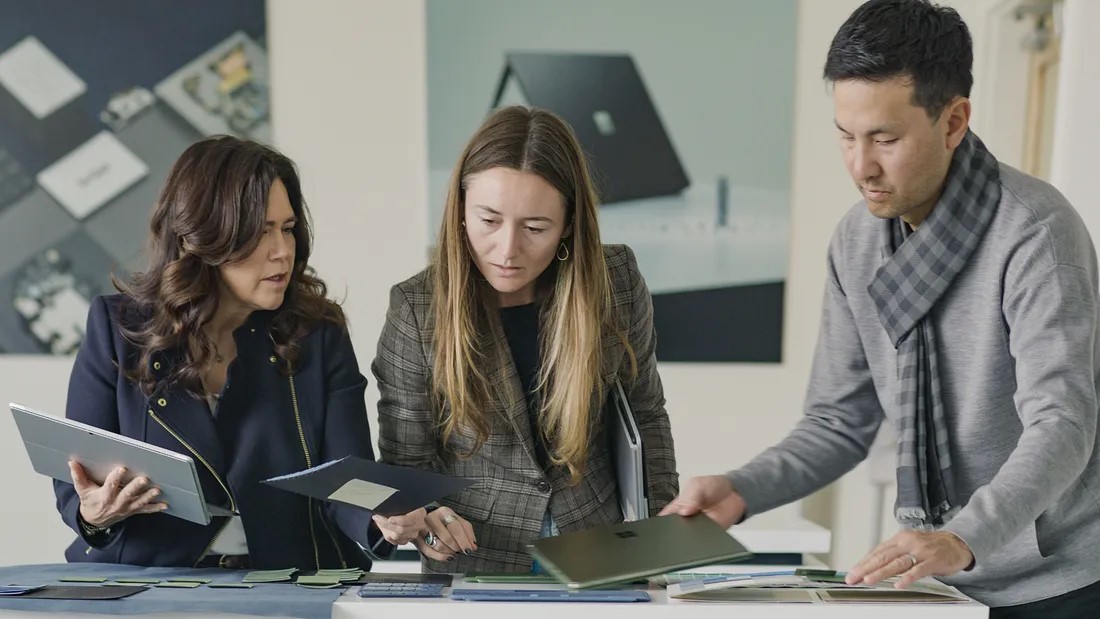
After myriad design iterations and rigorous testing, the team was able to integrate the partially biobased Alcantara material onto select Surface Pro Signature Keyboards. But a new process to create the material made it so towards the end of production, they split the thick material into thin sheets, thereby doubling the Alcantara material. The practice was a break from the tradition of using one side of the material while discarding whatever was cut off. The new process reduced waste, water, and energy. It was the result of the team relentlessly looking for ways to reduce waste.
As with any material, color plays a big role in telegraphing emotion. The new Microsoft Surface Pro Signature Keyboard is currently available with partially biobased material in Forest and Sapphire. These choices were inspired by nature, a reflection of the team’s desire to think about where we want our materials to go after we produce them. The timing of their creation would play a pivotal part too.
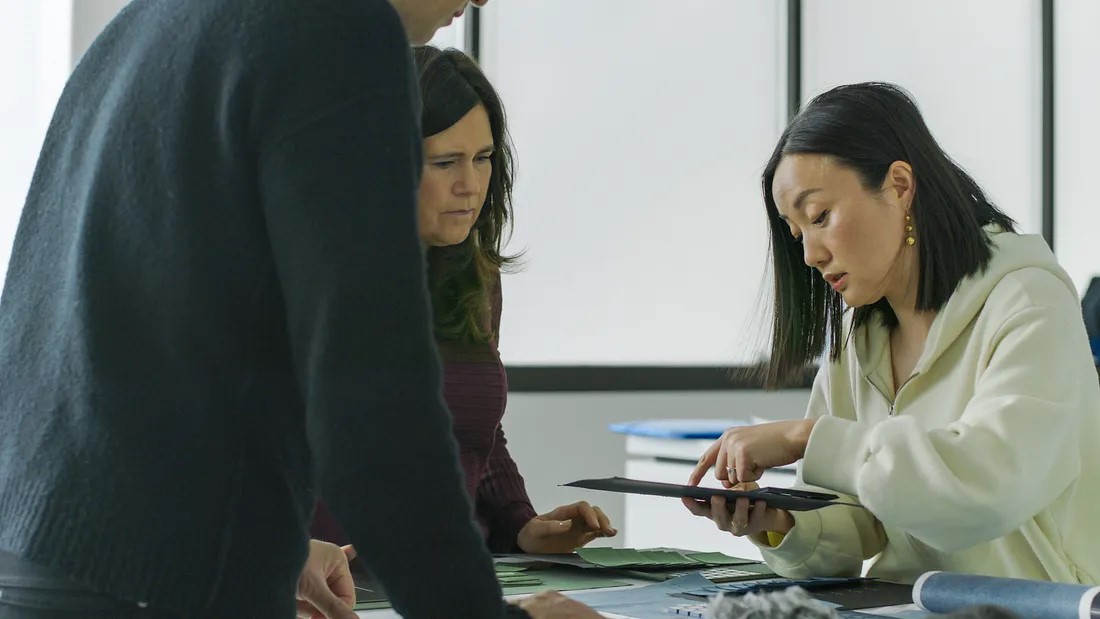
The color of hope and healing
It was the beginning of the pandemic when Senior Color Designer Quan Jasinski was developing the Forest and Sapphire colorways for the new partially biobased Surface Pro Signature Keyboard. As quarantines were grinding the world to a halt, people were looking for connection and meaning. Quan, while developing Forest, was drawn to nature where the air was heavy with precipitation. Sapphire blue was inspired by crystal-clear water and the ocean. The previous generations of the Surface Pro Keyboard were “classic” and “premium.” This time, since people were working remotely, professional and private life blurred together. It inspired the team to create keyboards that “were poetic, soft, and comfortable,” said Quan.
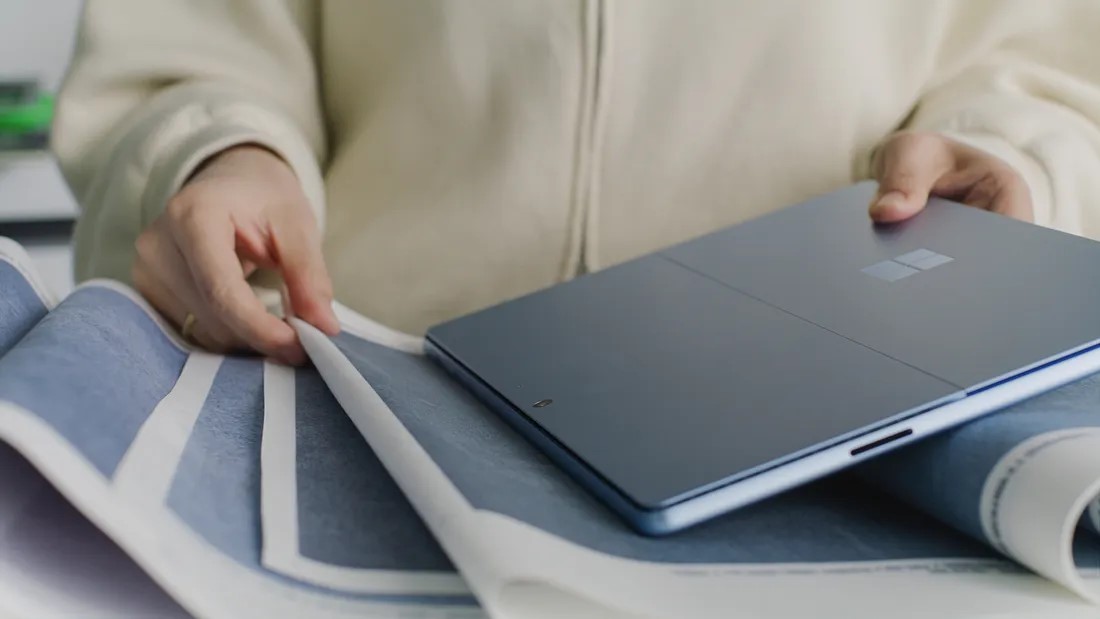
With Surface, the process of developing colors always starts with matching the anodized aluminum color of the tablet with contemporary colors to complete the experience from the device to typing. But to achieve Forest and Sapphire, Quan had to get the right colors to mix with the two-tone partially biobased Alcantara fiber — which meant figuring out whether the colors needed to be light, mid, or dark tone. Mixing the colors and the fibers together is like applying paint to a canvas where, instead of a white background, the negative space is grey. The team tried mixing lighter colors mixed with the gray Alcantara, but it looked muddy. Darker colors polarized the microfiber, making it look almost entirely black. The team’s intention was to accentuate the two-tone fiber to give the material that elegant look. They made the grey Alcantara fiber lighter, which widened the potential color range. The result would be the use of mid-tone colorways for Forest and Sapphire that were saturated and “punchy,” as Quan described. She wanted to capture a sense of hope and bring excitement to the Surface palette. The two Pro Signature Keyboards were a departure from Surface’s neutral colors. Forest and Sapphire reflected the changing of people’s values and a return to nature.

Reclamation: The future is now
The Surface team is working with Alcantara to develop materials that are made from fully renewable resources, with future products being fundamentally different. “The materiality of the construction, how we disassemble, how we repair, how we hopefully can recycle those materials, that’s going to change,” said Alec.
As Earthlings, mothers, fathers, sons, and daughters, this is a mission that knows no organizational boundaries but will require global cooperation and commitment. Here at Microsoft, “we know we have a long way to go, but we’re headed in the right direction,” said Erica. That also means that we have to ensure that the technology we create always benefits everyone on the planet, including the planet itself.
Microsoft Surface Pro Signature Keyboard in Sapphire and Forest is made with partially biobased Alcantara material containing at least 12% renewable content (percent of modern carbon according to ASTM-D6866 ) derived from waste molasses from the sugar industry.
Read more
To stay in the know with Microsoft Design, follow us on Twitter and Instagram, or join our Windows or Office Insider program. And if you are interested in working with us at Microsoft, head over to aka.ms/DesignCareers.
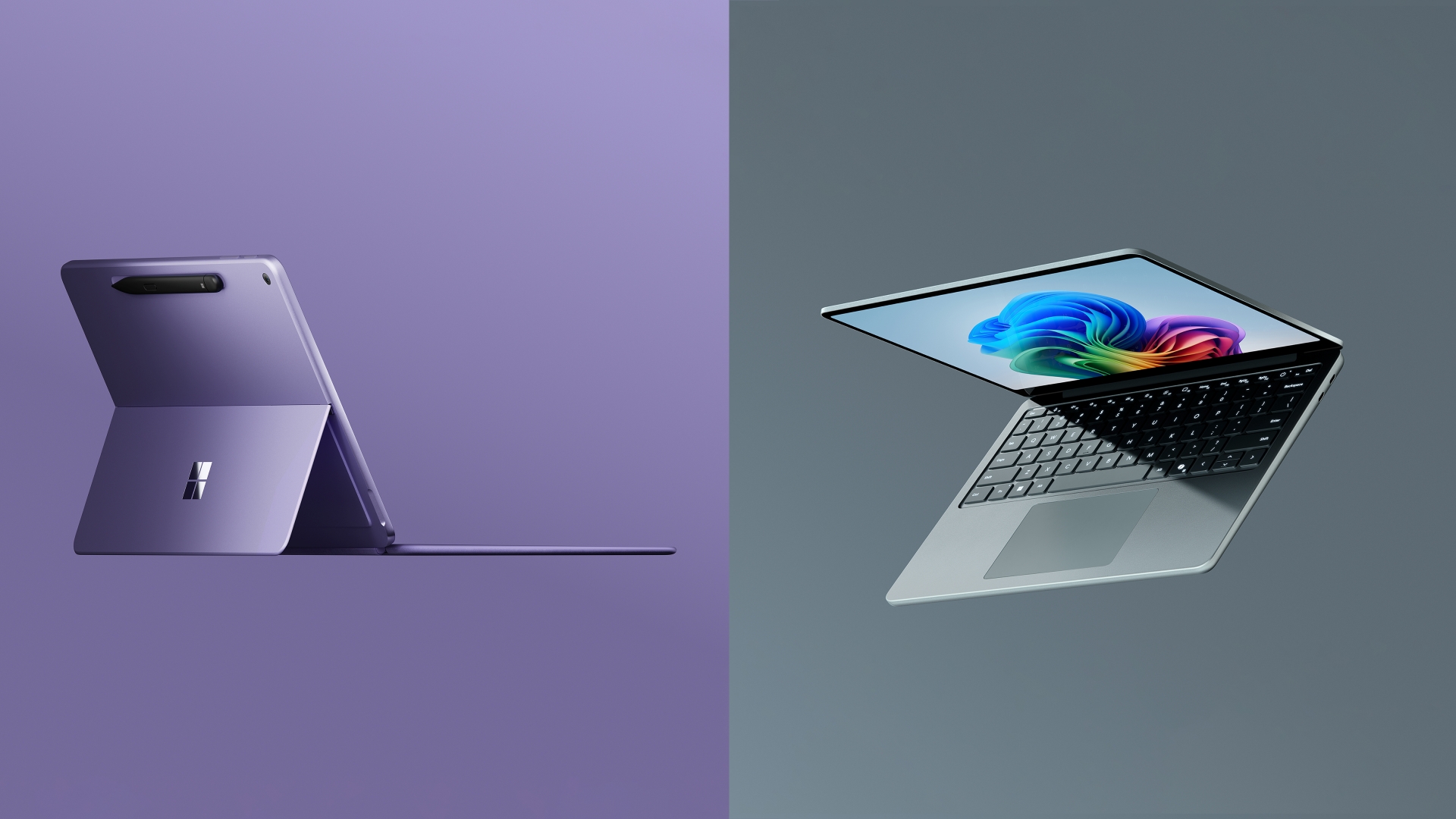
Surface Copilot+ PCs: Built to evolve, designed to adapt
How we crafted a new line of Surface Copilot+ PCs to empower creation, connection and change
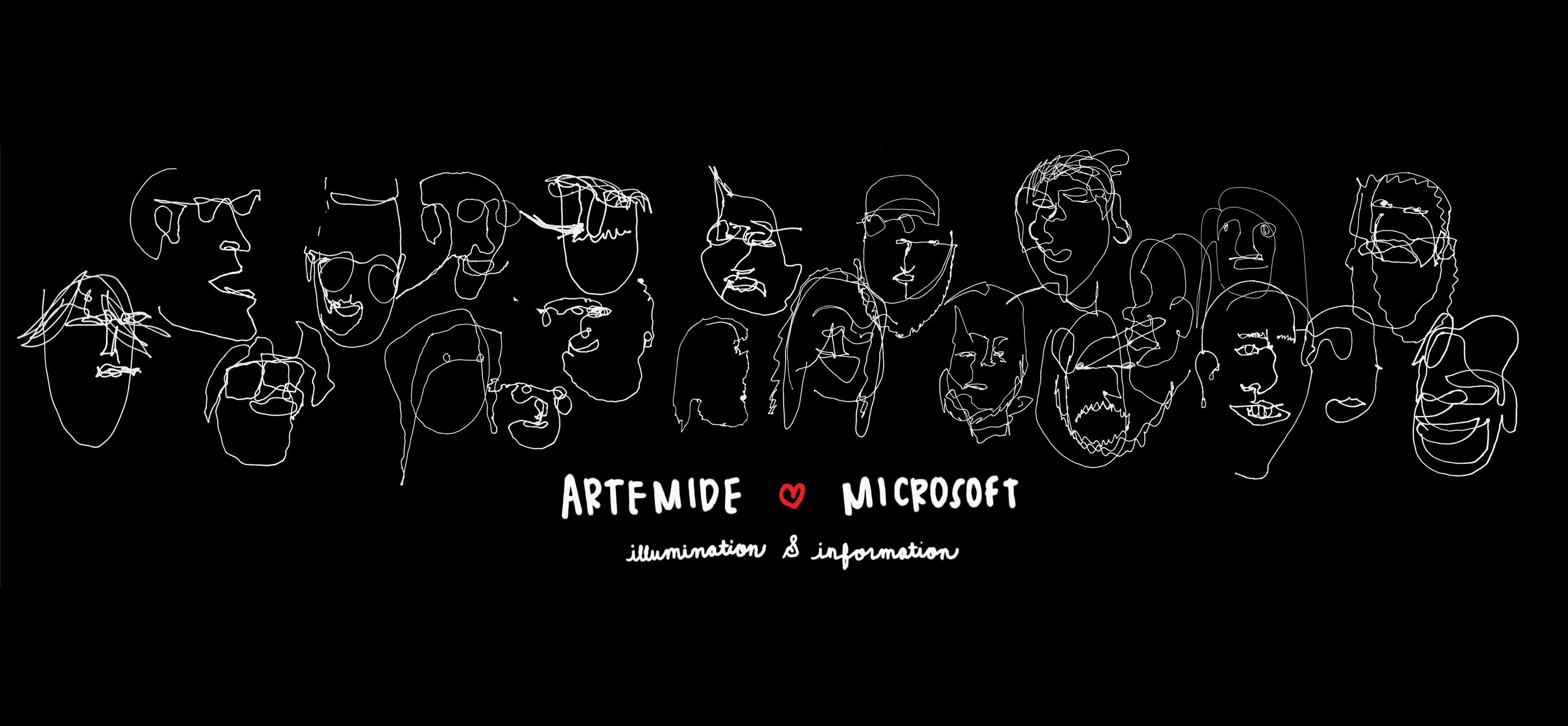
Illuminating the next era of computing
A futuristic exploration between Microsoft and Artemide based on the interplay of light and technology.

